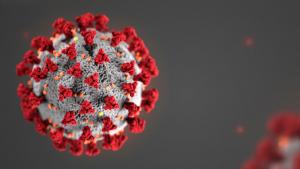UH faculty members issue recommendations on containing COVID-19
University of Hawaiʻi at MānoaThe state of Hawaiʻi should accelerate its public health response to the COVID-19 pandemic, according to a group of University of Hawaiʻi at Mānoa faculty. They have issued a 16-page report Crush the Curve: Urgent Steps Hawai‘i Can Take to Contain the Covid-19 Pandemic that includes the following recommendations:
-
Increase patient and surveillance testing with a focus on patients with milder symptoms, at-risk populations (nursing home residents, prisoners, etc.) and essential workers.
-
Expand the number of employees assigned to contact tracing that could include activating National Guard units and initiating scores of emergency hires.
-
Significantly increase the use of vacant hotel capacity to isolate every individual who tests positive and to provide housing for front-line responders and especially vulnerable persons for the duration of the crisis.
“The intention of this report is not to criticize the state’s efforts in responding to this crisis as Hawai‘i has truly come together to get through this first wave of the epidemic,” said UH Mānoa Professor Robert Perkinson, a specialist in criminal justice and one of the report’s authors. “What we wanted to do was highlight areas we see could improve the response moving forward. Unless we add capacity to trace every infection and isolate everyone who tests positive, we are still in grave danger. This is an illness that has punished caution and delay all over the world.”
The report was authored by an interdisciplinary team of faculty members coordinated by the UH Mānoa Public Policy Center. It is based on consultations with experts in multiple fields, including epidemiology, virology, economics and disaster response. The report analyzes Hawai‘i’s actions in four key areas of emergency response to emerging infectious disease: social distancing, diagnostic testing, contact tracing and isolation and quarantine. State and municipal authorities have made progress in each area but the researchers are urging more action.
“We have a real opportunity to defeat COVID-19 in Hawai‘i,” adds UH Mānoa John A. Burns School of Medicine Professor Seiji Yamada, one of the report’s co-authors. “Only if we deploy the full arsenal of public health tools, not just social distancing but widespread testing, tracing, isolation and quarantine.”
Colin Moore, director of UH’s Public Policy Center, notes that the report synthesizes the recommendations of experts across the university and is in sync with recommendations of public health experts worldwide. “These steps will be difficult and costly to implement,” he said, “but if we are to safely restart the economy, they are absolutely necessary.”
Managing COVID-19 until a large portion of the world’s population is vaccinated will require a substantial buildout of the state’s public health capacity. The researchers conclude that investment and appropriate action now will save lives and better position Hawai‘i for recovery.

